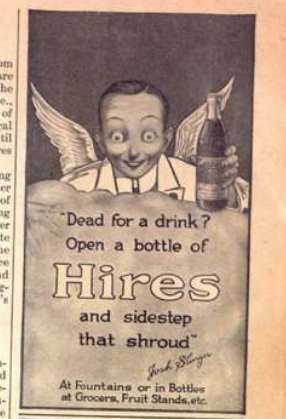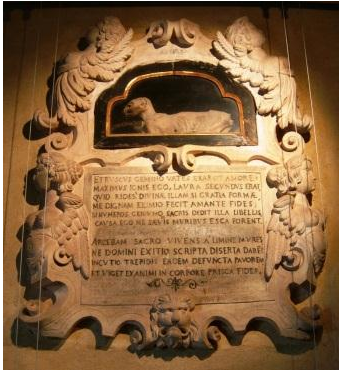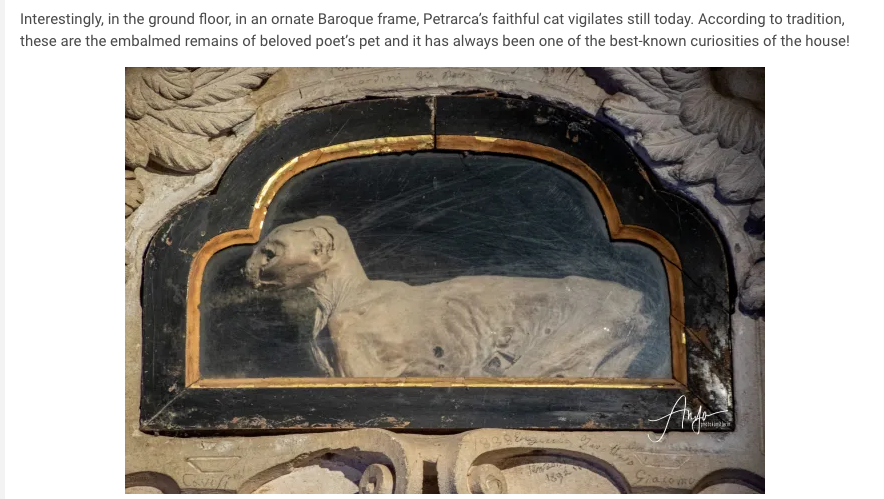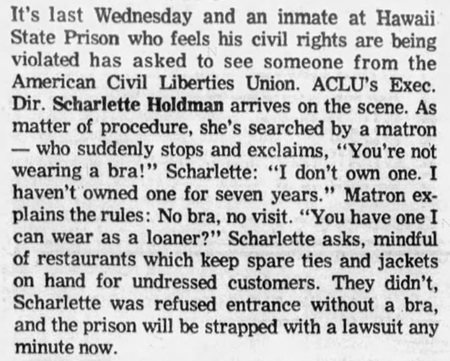June 2022
June 15, 2022
The ear as an inverted fetus
From Hugh Aldersey-Williams, Anatomies: the human body, its parts and the stories they tell (2014), p. 158:
Tampa Tribune - Aug 13, 1973
More info: wikipedia
Posted By: Alex - Wed Jun 15, 2022 -
Comments (2)
Category: Body, Patent Medicines, Nostrums and Snake Oil
Widdershins
Many thanks to longtime WU-vie Gerald Sacks for pointing us towards this neat little steampunk cartoon, whose anachronistic future is decidedly weird.
Posted By: Paul - Wed Jun 15, 2022 -
Comments (0)
Category: Science Fiction, Reader Recommendation, Cartoons, Love & Romance
June 14, 2022
Threshermen’s Queen
I'm not sure when the Threshermen began crowning a queen at their annual reunion. But in 1952 they decided to stop the practice. The reason they gave was that, "The local talent has been exhausted and we are going to wait a couple of years for a new crop."Sounds a bit harsh.

Marshfield News-Herald - Jan 9, 1952
Below is some of the local talent from an earlier year, pre-exhaustion.

The Bloomington Pantagraph - Sep 8, 1950
Posted By: Alex - Tue Jun 14, 2022 -
Comments (2)
Category: Awards, Prizes, Competitions and Contests, 1950s
Follies of the Madmen #535

Source. (Page 19)
Posted By: Paul - Tue Jun 14, 2022 -
Comments (3)
Category: Death, Advertising, Soda, Pop, Soft Drinks and other Non-Alcoholic Beverages, 1910s
June 13, 2022
Automatic Washing Machine for Dogs
Mario Altissimo was granted Patent No. 4,505,229 in 1985 for his "Automatic Washing Machine for Dogs and Like Animals".I wonder if anyone has ever created an equivalent type of automatic washing machine for humans.

Science Year 1983

Update: Paul gave me a heads up about this Three Stooges take on a washing machine for dogs. A clear example of prior art!
Posted By: Alex - Mon Jun 13, 2022 -
Comments (5)
Category: Bathrooms, Patents, Dogs, 1980s
The Dinosaur and the Missing Link
Posted By: Paul - Mon Jun 13, 2022 -
Comments (0)
Category: History, Unexplained Historical Enigmas, Movies, Science, Dinosaurs and Other Extinct Creatures, 1910s
June 12, 2022
Smelling the Enemy: The Odortype Detection Program
The U.S. Defense Advanced Research Projects Agency (DARPA) launched the "Odortype Detection Program" in 2002. It had two goals:The goal of Phase 2 will be to build a detector that can reliably detect the signature identified in phase 1 with high sensitivity and specificity.
By 2007, DARPA had changed the name of the program to the "Unique Signature Detection Program," but its goals remained essentially the same:
I haven't been able to find out what's become of the program since 2007. Though I'd wager that the U.S. government hasn't completely abandoned the idea since being able to identify people by their smell would be a hard-to-defeat surveillance technology. (Assuming that we all really do have a unique 'odortype' that can't be camouflaged with fragrance or by eating stinky food).
However, I did find a report on the program from 2005 that included the interesting detail that they field-tested the technology on seven sets of twins at Williamsburg, VA and Research Triangle Park, NC:
Posted By: Alex - Sun Jun 12, 2022 -
Comments (1)
Category: Military, Spies and Intelligence Services, Smells and Odors
Petrarch’s Cat
If you make a visit to Italy and visit the museum-home of the author Petrarch, you will get to see the mummified body of his adored cat.Or so the legend goes. Actually, the cat corpse is a mere four hundred years old, created by the person who owned the house in the 1600s.
Read about it here.


Posted By: Paul - Sun Jun 12, 2022 -
Comments (0)
Category: Hoaxes and Imposters and Imitators, Historical Figure, Cats, Europe
June 11, 2022
The Prison Bra Rule
In 1975, Scharlette Holdman, executive director of Hawaii's ACLU, tried to visit a prisoner in an all-male Hawaiian prison, at the prisoner's request. While being searched it was discovered that she wasn't wearing a bra, and so she was denied entry. She sued, and the case went to the Hawaiian Supreme Court which ruled in favor of the prison. As a result, it remains the rule that all female visitors to Hawaiian prisons must wear bras, whether or not the lack of a bra is evident.The case: Holdman v. Olim (1978)
More info from Dressing Constitutionally by Ruthann Robson:

Honolulu Advertiser - Feb 3, 1975
Posted By: Alex - Sat Jun 11, 2022 -
Comments (2)
Category: Prisons, Underwear, 1970s
Liberace and the Young Folk Perform “Feelin’ Groovy”
Posted By: Paul - Sat Jun 11, 2022 -
Comments (1)
Category: Excess, Overkill, Hyperbole and Too Much Is Not Enough, Music, Television, 1960s
| Get WU Posts by Email | |
|---|---|

| Who We Are |
|---|
| Alex Boese Alex is the creator and curator of the Museum of Hoaxes. He's also the author of various weird, non-fiction books such as Elephants on Acid. Paul Di Filippo Paul has been paid to put weird ideas into fictional form for over thirty years, in his career as a noted science fiction writer. He has recently begun blogging on many curious topics with three fellow writers at The Inferior 4+1. Chuck Shepherd Chuck is the purveyor of News of the Weird, the syndicated column which for decades has set the gold-standard for reporting on oddities and the bizarre. Our banner was drawn by the legendary underground cartoonist Rick Altergott. Contact Us |

